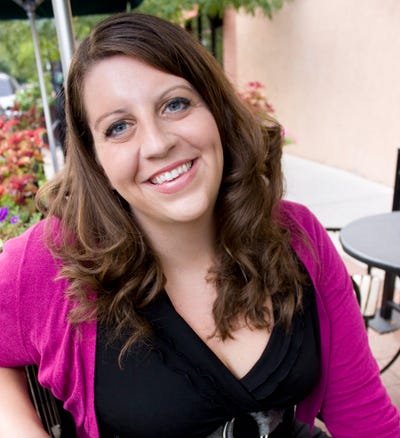New Food Order: Supporting farmers' transition to regenerative agriculture
Cash-strapped farmers need flexible, tolerant capital as they adopt regenerative agriculture. Find out how some organizations are seeking solutions.
May 18, 2023

Regenerative agriculture has enormous potential. It's often touted as the solution to climate change and lauding its ability to grow healthier food for a proliferating global population.
Well-known institutions, including the World Economic Forum and Natural Resources Defense Council, have documented how regenerative farming can sequester carbon, make agriculture more resilient to extreme climate events, improve crop yields and make food more nutrient-dense if crops are grown in healthier, more fertile soil.
Cash-strapped farmers need help transitioning their land to regenerative agriculture but desperately need access to more flexible, tolerant capital.
“Farmers don’t know how they should continue,” says Benedikt Bösel, founder and CEO of Gut&Bösel, a 7,400-acre farm in Brandenburg, Germany. “They are in fear of the future. They're in fear of their kids’ future.”
Bösel left a career in investment banking and venture capital to manage his family’s drought-stricken farm an hour outside of Berlin. According to Agrarheute, a German agriculture magazine, Bösel used private funds and founded LandVision Alt Madlitz GmbH to “implement projects for regenerative land use.” His innovations led to being named “Farmer of the Year 2022” at Ceres Awards in Berlin.
Farmers already carry heavy workloads, Bösel says, and now they are also being asked, without support, to do more for climate change, animal husbandry and biodiversity.
“I just get emotional when we always start talking about ‘The farmers can do this’ and ‘Why don't they do that?’” Bösel says. “Because you know, they're already doing everything they possibly can seven days a week.”
This New Food Order podcast episode, How Might We Better Support Farmers in their Transition to Regenerative Agriculture?, what can be done to support farmers through more collaborative models and funding sources. Louisa Burwood-Taylor, the head of media research at AgFunder and editor of AgFunder News, and Danielle Gould, the founder of Food+Tech Connect, host the roundtable discussion.
“No farmer wants to beg for money,” Bösel says. “But if society wants us to do all these things, we have to have more capital available to invest differently.”
Problems with the current farm system
For 40 years, farmers have been producing "as much as possible for the cheapest possible price," Bösel says.
Now many farmers are deeply in debt and stuck in a production system they can’t easily change because of their debt, their dependence on chemical inputs and market prices, he says.
“We need to get out of our debt structures,” Bösel says. “We need to get the flexibility to do the things that we need to do because if we wait six, seven or eight years until a debt payment runs out, we're done.”
Climate change and temperature extremes are making it even harder for farmers.
Usually, Bösel would have planted 50 hectares (123.5 acres) of cover crops this spring. “We can’t do that because the soil temperature is 78 degrees and nothing would germinate there,” he says. “So all the work that we've put in in the last three years has been burned down.”
Less extractive financing, better land use models
Jennifer O’Connor, executive director of Funders for Regenerative Agriculture says the current system and the infrastructure is very extractive with its policies and financing. That negatively affects small and mid-sized farmers.
“Most of the sector really only knows how to value yield and profit,” O’Connor says. “We’re going to need a totally new world order in our mindset of valuing the entire system.” Ideally, she wants to see a more holistic, outcomes-based approach.
“Any individual piece of land is very unique even from its neighboring piece of land, or from a region outside of that area,” O’Connor says. Stakeholders need to better understand there’s a “whole suite of interconnected outcomes” based on each piece of land, she says.
California’s dry, arid landscape might not draw down the same amount of carbon as a location in the Midwest. “But does that make the work that our producers are doing in California less valuable? Not at all,” O’Connor says. “Because there's a whole suite of outcomes on restoring native grasses, on biodiversity, on water, on sovereignty for our Indigenous and Black farmers in those areas and building land access that is cooperative.”
Bösel says technology, including data analytics in more advanced software programs, must be used more effectively to design more localized land-use models. That will help farmers to target and focus on specific problems like soil erosion based on unique land properties.
More patient capital, flexible financing
More importantly, farmers need access to more patient capital.
As a producer, Kelsey Scott, director of programs at the Intertribal Agriculture Council and owner of DX Beef, would like to reinvest more of her operational income in her business, rather than paying down principal debt each year. “It would allow me to diversify my production,” she says. In a few years, she would be able to pay off a larger share of that debt.
“Right now, I'm really a victim to the loan terms that are amortized over seven years,” Scott says. The banking system requires farmers to make equal payment installments—paying a large amount of interest and a lesser amount of principal upfront.
“What happens is, I may start with 50 cows, but I'm going to be staying at 50 cows through all seven years,” Scott says. “I have to sell off anything additional that I might be able to grow or raise in order to pay off that debt.”
If Scott received more patient capital, she says could defer her debt for a couple of years and capitalize on her operational income: grow her herd, maximize her grazing resources and raise larger animals to sell.
“There are real simple fixes that could happen in the current financial structure that would not be a tremendous deficit to the lending institution,” Scott says. She also wants lenders to include multigeneration assets in the value of her operation. “I’m on a seven-year term debt for a tractor that’s going to last 70 years,” she says.
She suggests that lending institutions, especially local operations that serve rural economies, to consider 30-year notes.
“How do we help lending institutions see that what’s being financed isn’t just an opportunity to draw your capital back out within seven years?” Scott says. “It’s a long-term investment, that when approached appropriately, will actually have an economic level impact on the community that you’re trying to serve as a lending institution.”
The importance of true cost accounting
Using true cost accounting, which captures all the costs and benefits of different farmland use, is the first step, Bösel says.
“If could have a wish, the number one really fundamental thing would be doing thing is true cost accounting, Bösel says. “Taking care of all the true costs or benefits that you can produce through a land use system, and monitor or monetize that.”
Scott says that comes from implementing more accurate “translation of valuations,” where regenerative farming practices are documented on a balance sheet.
“We have so many producers who are providing these ecosystem services, but that doesn't appear anywhere on their balance sheet,” Scott says.
That restricts what farmers can do. “It’s not like a farmer can go to a co-op and tout how much they improved organic matter by 2% in the past six years,” Scott says. And then ask to “slide on the $40,000 bill for mineral and nutrient supplements.”
Alternative methods to financing
Felipe Villela, co-founder of reNature, a private company that helps farmers and corporations transition toward regenerative agriculture and sustainable agroforestry systems, says it’s a complex problem because each farmer’s situation is unique. That requires creating financial instruments that are tailor-made for farmers.
In 2022, reNature began a campaign to transition 2% of all farmland and farmers in the world—about 10 million farmers and 100 million hectares (approximately 247 million acres)—to regenerative farming by 2035.
More than 50,000 farmers submitted project ideas to potentially convert over 1.2 million hectares of land, Villela says. ReNature had farmers go through due diligence to better understand a farmer’s specific financial needs.
Once reviewed and vetted, the farmer’s project is submitted to potential funds. Although most projects are handled by asset managers, a few are with Rabobank, a Dutch multinational banking and financial services company.
“We see that asset managers are going much faster [than banks] with creating new funds that enable farmers to get access to this financing,” Villela says. The key is having funds or a financial scheme that provides flexible, tolerant capital when a farmer is still developing a business case and transitioning to regenerative agriculture.
The challenge is that most executives don’t know where their sourcing countries are located, or how many acres of land or farmers are involved.
Some, like Unilever’s $1 billion private equity impact fund that works with AXA and Tikehau Capital, are trying. “But we see there’s still a lot of groundwork to do, to really understand how many farmers will be targeted, how many hectares and what’s the per-unit price,” Villela says. It becomes more complicated with international currency, since everything depends on a lot of different figures.
“That's why building from the bottom up makes more sense,” Villela says.
Listen and subscribe to the podcast here.
About the Author
You May Also Like





